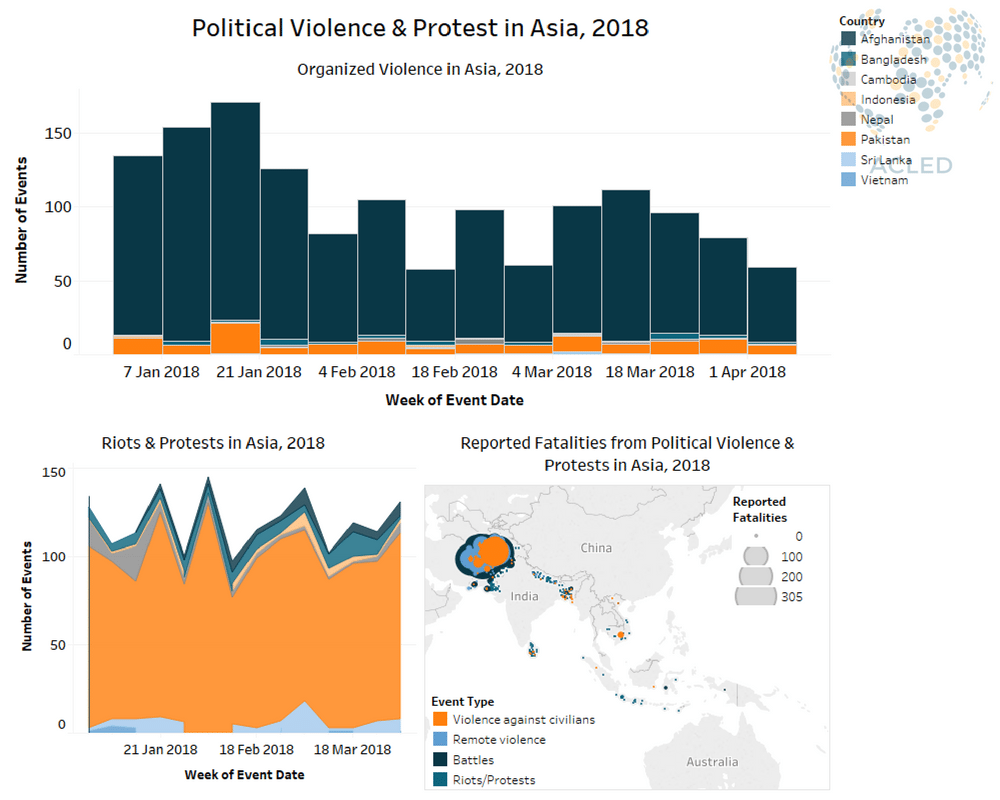Trends in political violence and protests over the past two weeks have remained static across South and Southeast Asia, with the exception of Pakistan which saw a significant rise in demonstrations.
In Pakistan, the number of protest events spiked compared to the previous two week period. Thousands of people from the Pashtun minority community – Pakistan’s second-largest ethnic group – engaged in demonstrations (Deutsche Welle, 9 April, 2018) against the Pakistani military and government, demanding an end to laws and practices believed to discriminate against Pashtuns. The demonstrations also sparked a counter-protest supporting the army under the banner the ‘Pakistan Zindabad Movement’ (Long Live Pakistan).
In Afghanistan, the number of conflict events this week remained stable, although a higher level of protest activity than usual was witnessed in the country . Protests erupted in several provinces in response to an Afghan airstrike on 2 April that targeted a seminary in Kunduz province, resulting in civilian casualties (The Nation, 6 April 2018).
In Bangladesh, Bangladesh Nationalist Party (BNP) supporters continued to protest this week to demanding the release of BNP chairperson Khaleda Zia. Level of protest events in Vietnam, Cambodia, Sri Lanka and Indonesia remained static compared with the previous two week period.
(Data on India [including Jammu & Kashmir], Thailand and Myanmar have not yet been released; trends are hence not explored above.)







